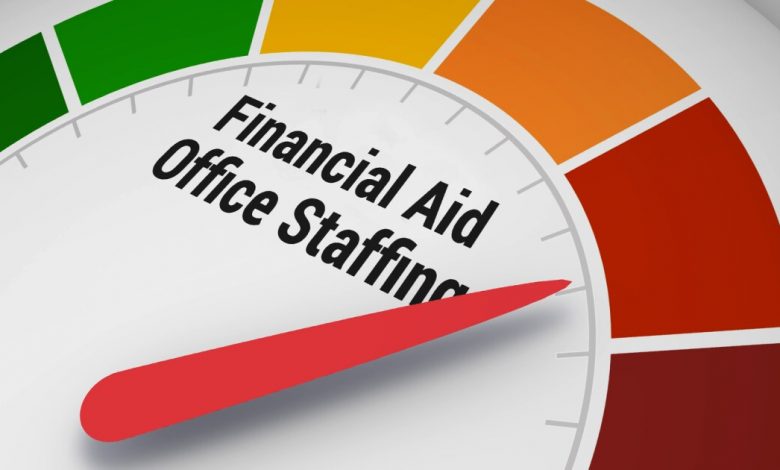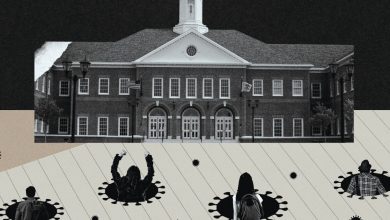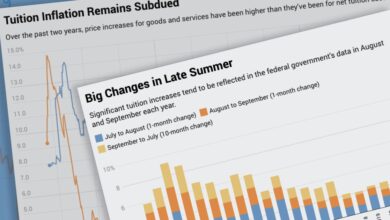Financial-Aid Offices Are Short-Staffed — and Some Are ‘Drowning’ as a Result

Many financial-aid offices are understaffed and struggling to fill open positions, according to new survey results from the National Association of Student Financial Aid Administrators. The findings, released on Tuesday, echo a major concern within a profession that helps keep higher education’s wheels turning: Leaner staffs with a long list of responsibilities are finding it more difficult to serve students while complying with federal and state regulations.
For some financial-aid offices, the association wrote in a summary of its findings, “what was once a challenge — albeit a manageable one — has become a crisis.”
Many colleges found it difficult to recruit and retain qualified financial-aid staff members before Covid-19 hit. But the pandemic has exacerbated that difficulty, according to the group, known as NASFAA. The organization, which first surveyed institutions in March 2022, found that half of the 518 respondents had operated at 75 percent of their staffing capacity during the past two aid cycles. In a follow-up survey of those that didn’t respond the first time, 56 percent of 507 financial-aid offices said that they were understaffed — and lacked the time to gather the information needed to complete the survey.
Turnover has been a headache in many fields during the Great Resignation. The three main reasons financial-aid officers recently left their positions, the survey found, are: a higher salary or better benefits in another position (69 percent), “no longer having the desire to work in financial aid” (35 percent), and moving to a different division at the same college (29 percent).
Many colleges reported challenges in filling those vacancies during the 2019-20 and 2020-21 aid cycles. Among financial-aid offices that lost at least one full-time staffer, nearly all respondents (84 percent) said it had been “very difficult” or “difficult” to fill vacant positions with qualified successors. Most (86 percent) said they had not received applications from enough qualified candidates, and 67 percent said the salaries they offered were not competitive. Hiring delays, hiring freezes, and institutional budget cuts were factors, too.
Empty seats come with high stakes: Understaffing can jeopardize customer service. Fifty-six percent of respondents said they were at least slightly concerned about their ability to adequately serve students, who often seek help with many tasks, such as completing the Free Application for Federal Student Aid, repaying their loans, and seeking loan forgiveness. “When there are staffing shortages, among the first things that go out the door are student-serving activities,” Karen McCarthy, the association’s vice president for public policy and federal relations. “It’s ‘We can’t do these FAFSA-completion nights anymore, because we just don’t have the time.’”
Students at colleges with understaffed offices might notice reduced hours for walk-ins and appointments — and longer processing times. Since the pandemic began, many financial-aid offices have seen a surge in requests for professional judgment, which is a time-consuming process. That’s just one task that might further tax an understaffed office. “In the past, once you turned in all your documents, you would get a decision in a week,” McCarthy said. “Now, maybe it’s three weeks.”
Financial-aid officers wear many hats. In addition to helping students and families, they must ensure that their offices remain in compliance with numerous federal and state regulations. Failure to do so can result in severe consequences — including financial penalties — for their institutions. Scrutiny from the U.S. Department of Education, as the association notes in its summary, is increasing.
Yet 39 percent of respondents said they lacked the staff and resources necessary to administer their aid programs in compliance with those crucial requirements. And 78 percent were at least slightly concerned about their college’s ability to meet those requirements in the future.
And their responsibilities keep growing. During the pandemic, for instance, financial-aid staffs have scrambled to deliver aid to students through the Higher Education Emergency Relief Fund. “It’s been the perfect storm,” McCarthy said. “With the Great Resignation affecting all employers, we’ve had to figure out how to administer multiple pots of federal funds, and the rules kept changing. There was more money rolling in that colleges had to turn around, and our offices didn’t get additional staff to help with that.”
The association wrote that it planned to promote discussions among member institutions about possible ways to strengthen the pipeline to financial-aid positions. The group also suggested that colleges remove obstacles to filling vacant positions by re-evaluating how they classify financial-aid staff members, and by taking a closer look at what they pay those employees.
McCarthy said she hoped that the survey findings would help institutional leaders better understand long-simmering concerns within the financial-aid field: “The reason we did this survey is that some of our members raised their hands and said, ‘Hey, we’re really drowning right now. Is anyone else drowning?’”
Source link






